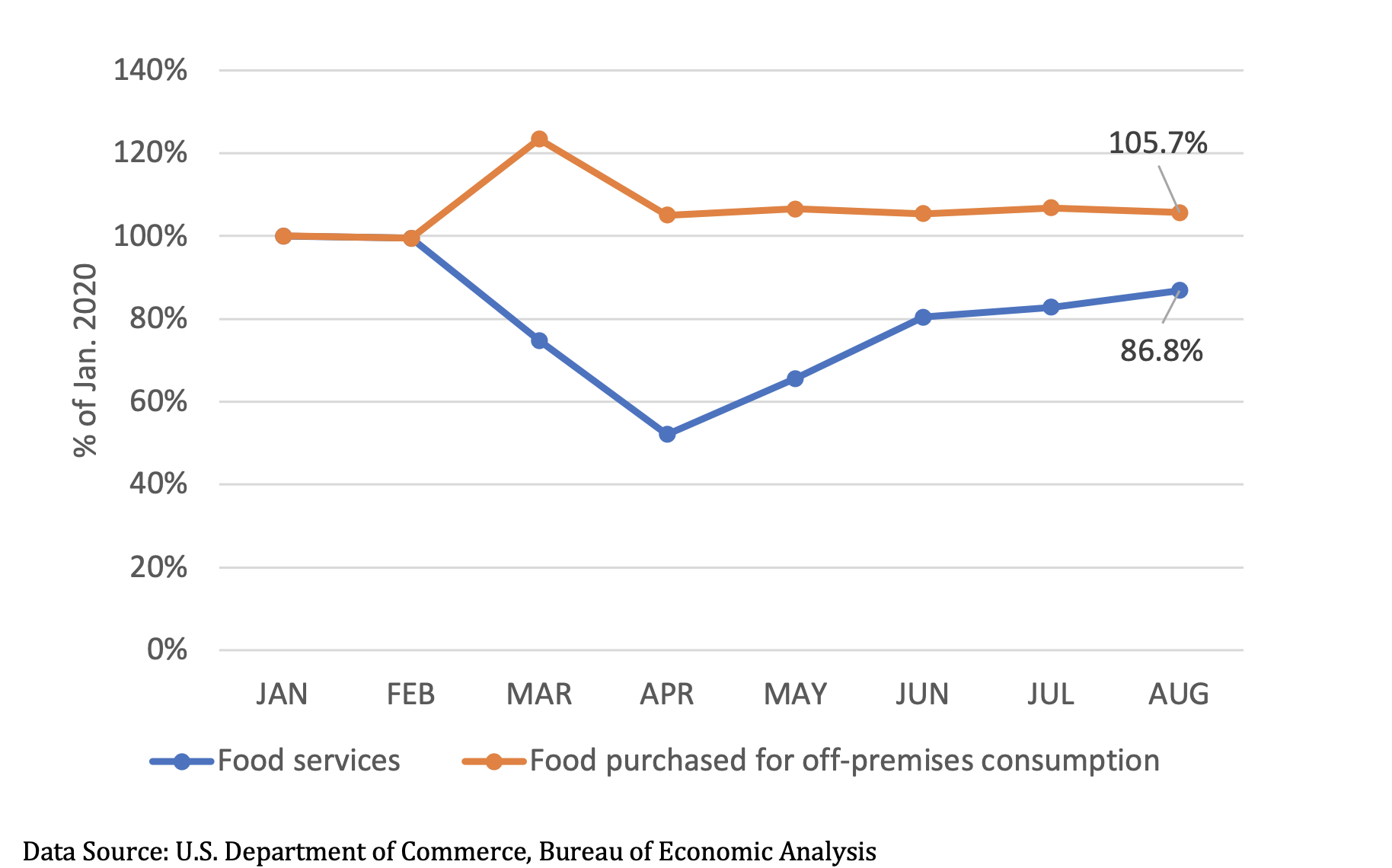Oct. 2, 2020
Personal income dipped in August; movie theater spending up more than 200 percent
By Mary Hightower
U of A System Division of Agriculture
Fast facts:
- Movie theater spending rises more than 200 percent, July to August
- Decline in unemployment benefits linked to decline in personal income
(580 words)
(Download this story in MS Word format here.)
LITTLE ROCK — Despite a decline in personal income between July and August, Americans increased their spending in a few places, including movie theaters, museums and campgrounds, according to the Bureau of Economic Analysis.
Personal income declined 2.7 percent, or $543.5 billion from July to August, slightly more than the consensus pre-report estimate of just under 2.5 percent during that time period, said economist John Anderson.
Anderson is head of the agricultural economics and agribusiness department for the University of Arkansas System Division of Agriculture and the Dale Bumpers College of Agricultural Food and Life Sciences. He has been providing pandemic-related analyses of the economy since March. His analysis of the September “Personal Income and Outlays Report” can be found at https://bit.ly/3nb4Km6.
The decline in personal income was more than accounted for by a decline in unemployment benefits, Anderson said. Unemployment insurance payments fell by $687 billion in August.
However, wages and salaries increased for the fourth straight month in the service sector, growing more in August than in July.
Hospitality industry gains
The growth in the service-producing sector “almost certainly reflects a bit more robust recovery in travel and hospitality industries in the more recent month,” Anderson said.
The report noted that personal spending on food services and accommodations increased by almost 7 percent from July to August; “that’s about double the pace of increase over the preceding month,” he said.
Recreation services spending dipped just a bit overall from the prior month, but there were a couple of individual categories of spending that showed increases.
“Spending at movie theaters increased by 239 percent in August over the prior month,” Anderson said. “Amusement parks and campgrounds marked a third consecutive month of 20 percent growth in spending; and museums and libraries posted a healthy 13 percent growth in spending.”
Anderson added that while spending in all of these categories remains far below pre-COVID levels, “this surge in growth does offer some evidence that – either out of COVID fatigue or genuine gains in confidence – consumers are at least tentatively moving back toward more normal behavior.”
Food spending
On the other hand, despite rising by almost 5 percent in August, spending on food away from home remains almost 13 percent below pre-COVID levels. Combined spending on food for at home consumption and food services is still about 3.5 percent lower than it was in January.
“In aggregate terms, the decline in food service spending has been quite large,” Anderson said. “For example, August spending on meals at fast food and other eating places, including 'fast casual,' was almost $60 billion lower than in January.”
He said the decline in food service spending “is clearly a negative demand-side factor for meat, particularly for beef and chicken, which count on food service demand for a relatively high proportion of their product.”
Chicken would seem to be particularly vulnerable to this effect since much of the chicken that goes to food service channels is relatively high-value product: boneless and skinless breasts, breast tenders, wings.
“It is difficult to clearly quantify these effects, though, since we can’t separate food service spending into its component parts,” Anderson said. “Worth noting, though, the national broiler composite wholesale price as of the last week of September was almost 20 percent lower than a year ago – despite the fact that on the supply side of the market, weekly production has been running consistently below year-ago levels since before the middle of the year.”
To learn more about extension and research programs in Arkansas, visit https://uada.edu/. Follow us on Twitter at @AgInArk, @uaex_edu or @ArkAgResearch.
About the Division of Agriculture
The University of Arkansas System Division of Agriculture’s mission is to strengthen agriculture, communities, and families by connecting trusted research to the adoption of best practices. Through the Agricultural Experiment Station and the Cooperative Extension Service, the Division of Agriculture conducts research and extension work within the nation’s historic land grant education system.
The Division of Agriculture is one of 20 entities within the University of Arkansas System. It has offices in all 75 counties in Arkansas and faculty on five system campuses.
Pursuant to 7 CFR § 15.3, the University of Arkansas System Division of Agriculture offers all its Extension and Research programs and services (including employment) without regard to race, color, sex, national origin, religion, age, disability, marital or veteran status, genetic information, sexual preference, pregnancy or any other legally protected status, and is an equal opportunity institution.
# # #
Media Contact: Mary Hightower
Chief Communications Officer
University of Arkansas System Division of Agriculture
mhightower@uada.edu
501-671-2006
